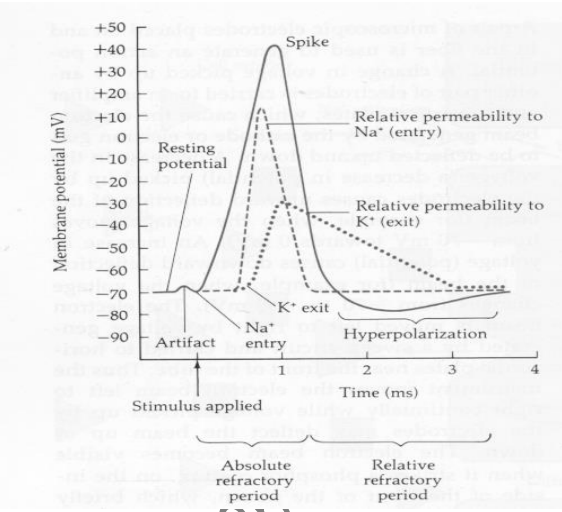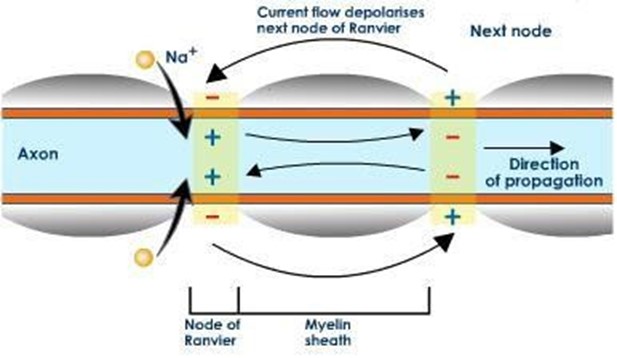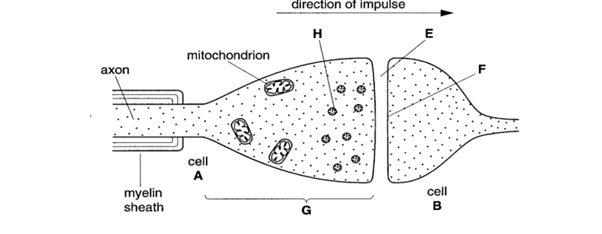Action potentials #
- this is a physiological phenomenon which occurs due to a sudden momentarily increase in permeability for sodium ions by neuronal membrane or axon.
- the normal potential difference across it is usually -70mv
- this potential difference is called resting potential
- during impulse transmission across the neuronal membrane its permeability towards Na+ increases momentarily
- Na+ ions enter into the neurons from the extracellular environment through Na+ ions channels
- Interior of the membrane becomes increasingly more positively charged with respect to the outside (depolarisation)
- potential difference reaches the threshold potential, an action potential is generated(+40mv)
- Na+ channels close, K+ channels open thus the outward movement of K+ down their electrochemical gradient removes the positive charge inside the axon ie repolarisation
- Slight overshoot (more –ve) than the resting potential (hyper polarization)

Refractory period #
period of time where the axon is unresponsive, recovering from an action potential (restoring its resting potential). It can be absolute or relative refractory period
- relative refractory period – an action potential can be generated depending on the relative strength of the impulse
- absolute refractory period – an action potential cannot be generated no matter the relative strength of the impulse
Transmission of action potentials #
Once action potential has been set up, it moves rapidly from one end of the neuron to the other. This happens because the temporary depolarisation of one part of the membrane sets up local circuits with the areas on either side of it. These cause depolarisation of these regions as well. The nerve impulse therefore sweeps along the axon.
- Action potentials only take place at the nodes of Ranvier, where there is no myelin present
- factors that are important in determining the speed of conduction.
- Diameter of the axon: the greater the diameter the faster the speed of transmission
- The myelin sheath: Mylenated neurons conduct impulses faster than non-myelinated ones
- Temp affects speed of conduction of impulses-Higher temp increases rate of diffusion of ions
Saltatory conduction #
- Impulses travel faster in myelinated neurones
- Schwann cells prevent diffusion of ions
- nerve impulses leap from node to node
- Thus, depolarisation only at nodes of Ranvier
- this increases the speed of conduction
- it is highly efficient because few ions cross the membrane at the node of ranvia, so active transport is minimized

Describe the structure of a myelin sheath and explain its role in the speed of transmission of a nerve impulse. #

- Schwann cell;
- wrap around axon;
- sheath mainly lipid;
- (sheath) insulates axon (membrane);
- Na+ / K+, cannot pass through sheath / can only pass through membrane at nodes;
- depolarisation (of axon membrane) cannot occur where there is sheath / only at nodes of Ranvier;
- local circuits between nodes;
- action potentials ‘jump’ between nodes;
- saltatory conduction;
- increases speed / reduces time, of impulse transmission;
- up to 100 ms-1;
- speed in non-myelinated neurones about 0.5 ms-1;

Nervous Control questions and answers

